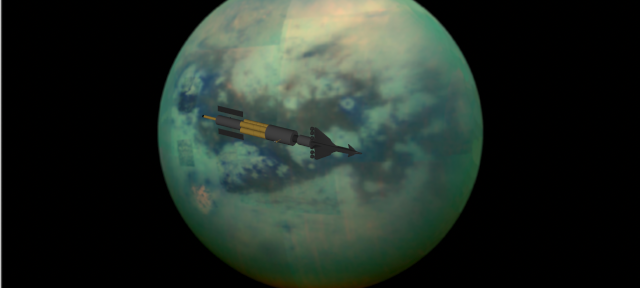Category: Aerospace
-
AIAA ASCEND 2023 Papers: Liquid Rockets and Solar Parasols
We presented two papers at the 2023 AIAA ASCEND conference in Las Vegas on October 25, featuring the work of our interns William Huang and Aniesha Dyce. All GN&C analysis and simulations were performed using our Spacecraft Control Toolbox, while the parasol model was built in Fusion 360. Thanks to the session chairs Dr. Erica…
-
Beyond Earth Symposium
The Beyond Earth Institute is conducting the Beyond Earth Symposium LEO to Lunar to Living Beyond Earth:Policy Pathways to Space Migration November 1-2, 2023 There will be attendees from the U.S. Space Force, The Japan Aerospace Exploration Agency (JAXA), NASA, and many private companies. The Beyond Earth Institute is a non-profit think tank that conducts…
-
Space Movies
Movies about space, both fiction and historical, have inspired engineers and scientists since movies were first produced. Here is my list of movies. I’ve included links to IMDB. Moon. This movie is a realistic depiction of helium-3 mining on the moon, with an interesting twist. Helium-3 is an isotope of helium used for a wide…
-
India’s Chandrayaan-3 Lands on the Moon!
Congratulations to the Indian Space Research Organization for the successful landing of the Chandrayaan-3 spacecraft on the moon! This is the first spacecraft to land near the Lunar South Pole. The spacecraft includes a rover. The spacecraft will return information that will help future missions.
-
Final Titan Aircraft Paper Published in Acta Astronautica
The final version of our paper, “Nuclear Fusion Powered Titan Aircraft,” by Mr. Michael Paluszek, Ms. Annie Price, Ms. Zoe Koniaris, Dr. Christopher Galea, Ms. Stephanie Thomas, Dr. Samuel Cohen, and Ms. Rachel Stutz is now available, open access, on the Acta Astronautica website. As described in our earlier post, the paper discusses a mission…

-
PSS appears on the Space Business Podcast to talk about nuclear fusion propulsion
Mike Paluszek and I appear on the newest episode of Space Business Podcast to talk about nuclear fusion propulsion, Direct Fusion Drive, and the Princeton Field-Reversed Configuration (PFRC) concept! We had a great conversation with the host of this podcast, Rafael Roettgen, who asked us thoughtful questions. In this episode, we discuss topics such as:…
-
Our Titan Mission Paper preprint is now online in Acta Astronautica
Our IAC paper on a fusion-powered Titan mission is now available in preprint on Acta Astronautica online, with the final version to come soon! Our mission concept utilizes two PFRC reactors: one configured as a Direct Fusion Drive rocket for the journey to Titan, and a second configured as a power source for the electric…

-
Crowdfunding for fusion development closing at the end of April
Our crowdfunding opportunity at is scheduled to close at the end of the month. We’ve raised over $100K so far to support fusion development and specifically, the PFRC-2 experiment at Princeton Plasma Physics Laboratory as we close in on our ion heating milestone. This is the last two weeks to invest in our raise on…
-
Aerospace Engineering Winter Internship
I worked on two projects during my winter internship at Princeton Satellite Systems: a two-stage-to-orbit (TSTO) launch vehicle design proposal related to the NASA Space Launch System (SLS) and a satellite conjunction maneuver demo. These both used the Spacecraft Control Toolbox for MATLAB. One of the main ideas behind the TSTO launch vehicle project is…
-
Producing Terrestrial Power with Helium-3 from Uranus using PFRC/DFD
Our latest paper on DFD applications, “A Fusion-Propelled Transportation System to ProduceTerrestrial Power Using Helium-3 From Uranus”, is now available from AIAA. This paper was part of the Future Flight Propulsion track and AIAA SciTech 2023. For those with AIAA membership, there is a video recording of the presentation as well! Download the paper here.…

